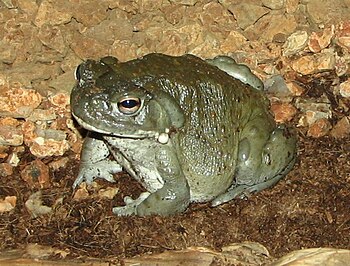 |
| Sonoran Desert Toad (Bufo alvarius) (Photo credit: Wikipedia) |
The fact that a toad secretes a substance that can alter the human mind may lead to speculation about the "Frog Prince" fairy tale. In this folk legend, a woman finds a frog in the wild, kisses it, and it turns into a handsome prince. Could this ancient tale actually be based on fact? After all, if someone were to lick not a frog but the right kind of a toad, perhaps she might experience hallucinations that made her imagine the amphibian was transforming into a handsome prince. This theory is merely speculation, of course. In reality, licking the venom of toads or any other animal may be highly dangerous and is certainly not recommended.
Albert Most, the author of "Bufo Alvarius: The Psychedelic Toad of the Sonoran Desert" does not discuss the licking of toad venom in his text. Rather, his information involves drying and then smoking the toad venom in order to achieve what he calls "almost overwhelming psychedelic effects." These effects are evidently not unlike those generated by LSD, in which hallucinations, visual illusions and distortions of the perception occur. The episode is relatively short, however, perhaps as little as fifteen minutes, after which, Most writes, "There is no hangover or harmful effect."
It has been reported that Bufo Alvarius toads have been an element in the rituals of native shamans for hundreds of years. Returning to ancient European folklore, witches are often associated with toads. Toads supposedly give warts to people, and witches were frequently portrayed with large warts. In our more enlightened age, it is now known that so-called witches were more likewise women, possessing useful knowledge about medicinal herbs and plants. Could it be that these wise women were also aware of the powerful effects of toad venom?
Literature published by the California State Department of Fish and Game states that the problem of people trying to become intoxicated from licking the skin of toads or smoking dried toad venom is sufficiently extensive that laws against toad licking have been passed by some states, and that toad venom is currently classified as a controlled substance.
|

No comments:
Post a Comment